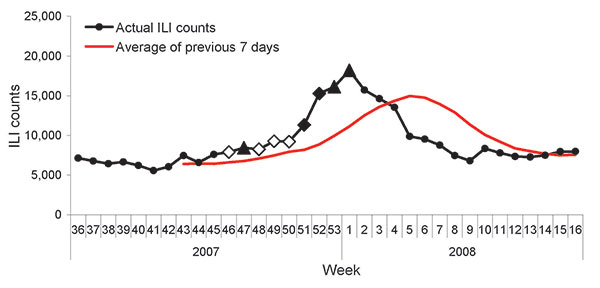Volume 15, Number 10—October 2009
Research
Review of an Influenza Surveillance System, Beijing, People’s Republic of China
Figure 6

Figure 6. Weekly illness-like illness (ILI) counts by Early Aberration Response System to detect the onset of the influenza epidemic during the 2007–08 season, Beijing, People’s Republic of China. Triangles and diamonds represent different alert situations—C1-mild (C1), C2-medium (C2), and C3-ultra (C3)—automatically generated by the reporting system: triangle, C2C3; open diamond, C3; and solid diamond, C1C2C3.
Page created: December 07, 2010
Page updated: December 07, 2010
Page reviewed: December 07, 2010
The conclusions, findings, and opinions expressed by authors contributing to this journal do not necessarily reflect the official position of the U.S. Department of Health and Human Services, the Public Health Service, the Centers for Disease Control and Prevention, or the authors' affiliated institutions. Use of trade names is for identification only and does not imply endorsement by any of the groups named above.